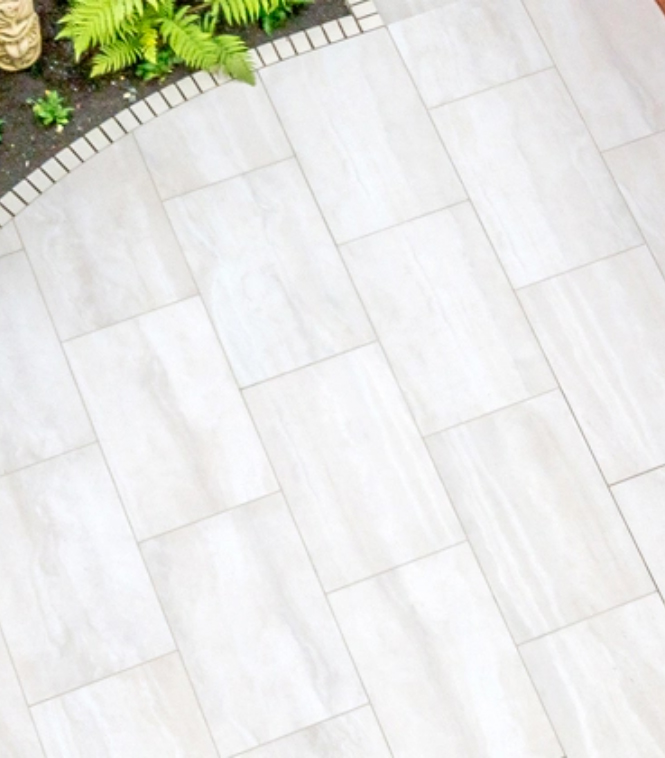Using a Brick Bond Tile Pattern
If you’re planning to lay your PrimaPorcelain tiles or paving slabs yourself, you should use a one-third brick bond tiling pattern for visually appealing results.
Get in Touch
The brick bond tile pattern involves laying your tiles so that the join between one tile and the next is staggered from row to row. Here’s what that looks like:
As the name suggests, the brick bond pattern is commonly used by bricklayers, who offset the joints between bricks to increase the overall stability of the wall. But it is also a useful technique when laying tiles or pavers.
As the name suggests, the brick bond pattern is commonly used by bricklayers, who offset the joints between bricks to increase the overall stability of the wall. But it is also a useful technique when laying tiles or pavers.
Get In Touch
Offset by a third of the tile's length
It is known in this industry that porcelain tiles and pavers exceeding 75cm in length and/or width have a slight bow to them. This bowing occurs as a natural result of the drying process – it’s a characteristic that can be found even in high-quality porcelain products such as those available from PrimaPorcelain.
When tiling with a brick bond pattern, offset each row from the previous row by no more than one third of the tile’s length.
When tiling with a brick bond pattern, offset each row from the previous row by no more than one third of the tile’s length.

This will ensure that the aforementioned bowing does not adversely affect the look of your tiled area. Staggering tiles by more than a third of their length (e.g. placing your tiles halfway along the length of the tile in the previous row) may accentuate the bowing effect and detract from the appearance of your beautiful porcelain paving.
Most professional fitters will have the experience to suggest the correct brick bond pattern to provide the even surface needed. If your tiling contractor has not laid longer tiles before, please feel free to refer them to this information, or a member of the PrimaPorcelain team will be happy to advise.
For more information about our products and how to install them correctly, please contact the PrimaPorcelain team today.
Most professional fitters will have the experience to suggest the correct brick bond pattern to provide the even surface needed. If your tiling contractor has not laid longer tiles before, please feel free to refer them to this information, or a member of the PrimaPorcelain team will be happy to advise.
For more information about our products and how to install them correctly, please contact the PrimaPorcelain team today.

